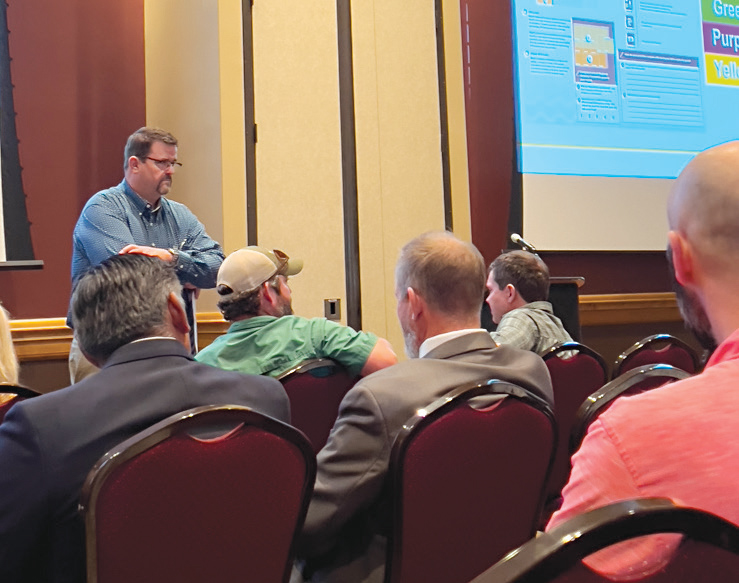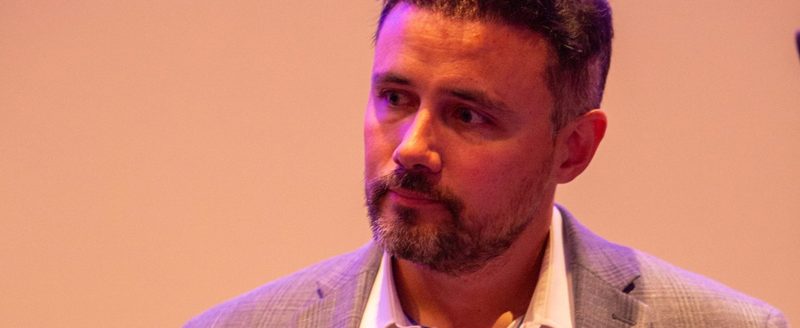Public input meetings held for implementation of Kansas Water Plan


There can’t be execution without a plan.
Half a dozen Kansas Water Plan implementation strategic planning meetings are being held in June across the state. Hosted by the Kansas Water Office, Kansas Department of Agriculture and Kansas Department of Health and Environment, the meetings offered an opportunity to hear the thoughts of those impacted by the plan.
Meetings in Colby took place June 17; Dodge City was held June 18; and Chanute June 20. Three more meetings will be held June 25 in Wichita; June 26 in Salina; and June 27 in Lawrence. Further meetings will be held in the fall to discuss the plan implementation even more.
Earlier this year, Kansas Gov. Laura Kelly gave the Kansas Water Authority the go-ahead to start developing a strategic plan—including funding—based on five guiding principles of the Kansas Water Plan. Initially, the request included recommendations for a large-scale, long-term investment framework before the 2025 legislative session. These recommendations should include policy changes, ways to improve state capacity and water management, establishing measurable goals and timelines, and receiving input from various state and local stakeholders.
Input necessary
Organizers said input from various state and local stakeholders is vital to the process. Meetings included facilitated discussion of goals and priorities for three of the Guiding Principles of the Kansas Water Plan related to aquifer, reservoirs and water quality issues.
Julie Lorenz, former Kansas Department of Transportation secretary, led the Dodge City meeting and told the crowd that water is a resource for everyone—statewide.
Lorenz questioned how children and grandchildren are going to have enough water to choose where to live in Kansas and get to stay in the state and have the same opportunities all have enjoyed in the past.
Lorenz said she is no water expert, but she’s well versed in the process of policy implementation at the state level.
In Kansas, the main water concerns are reservoirs, water quality and a declining Ogallala Aquifer. By working together, Lorenz hopes to address these multiple problems across the state.
“I often say transportation is like the connecting fiber for our state,” she said. “But, my goodness, water is the lifeblood of our state, and putting together a program that’s organized and that taxpayers and legislators can understand where the money goes, and what it accomplishes for those taxpayer dollars, is of utmost importance.”
The water plan is not new, she said, and a “great water vision was developed” when former Kansas Gov. Sam Brownback was in office. Since that time, plans have been developed, and this one builds upon that previous work.
“It’s time now to put an action plan together,” she said.
Gov. Kelly and the legislature have already allocated the dollars for the plan; however, Lorenz believes legislators want to know how money will be spent and what’s being accomplished.
“I think they’re willing to invest more, but they need to know what those dollars are buying,” she said.
In Kansas, there’s an interdependency across segments when it comes to water use. Lorenz said municipal water use accounts for 11% of usage across the state. Stock water is at 1% and irrigation is 83%, while 3% is industrial use, 1% is recreation and 1% is miscellaneous.
For most Kansans, water comes from two main sources, Lorenz said. One is groundwater or aquifers, and the other is surface water or streams, rivers, lakes and reservoirs.
“These rivers tie us together, just like transportation and highways tie us together,” she said. “The uses and sources may be different, but again, we’re one state.”
Three crucial issues
During the meeting three primary goals were discussed, mostly focusing on three of the biggest issues—aquifers, reservoirs and water quality. When it comes to the High Plains Aquifer, the goal is to halt the decline of the Ogallala Aquifer, restore and maintain natural stream flow and maximize the economic output of all water users.
For reservoirs, the goal is adequate storage in all climate conditions, promoting and incentivizing regionalization and promoting land management practices to reduce sediment. The goal for water quality is that all water sources are free from all forms of pollution and contaminants.
When it comes to the aquifer, most in the High Plains are concerned about the danger of running out of water. Lorenz looked at the gross domestic product of each of the counties that sit over the aquifers. The total— $57 billion per year—is staggering.
“So do the aquifers matter across the state? Absolutely,” she said. “It’s not just about adding to these communities. They’re inextricably linked. When the aquifer runs out, it’s not just to ag, it’s the communities’ lifeblood that depend on these aquifers.”
Kansans need water today, tomorrow and forever, and Lorenz encouraged those in attendance to offer their solutions, ideas and wins and describe what’s not working.
“Purchasing water rights is expensive, and it has consequences, which may impact your GDP, your economy,” she said. Incentives can be really helpful, but if it takes too long or if it takes a lot for people to take advantage of the incentives, then time can be lost.
Regardless of the conversations, Lorenz said it’s important to have a nimble approach to the issues at hand. She believes a series of actions can be more productive rather than trying to take one big action. The process will require additional input even when recommendations are made, she added.
“Until then we can react, maybe even be proactive as we see conditions change, whether it’s an aquifer condition or drought condition or whatever,” she said. “It’s about staying much more closely attuned to people and being able to take action faster.”
In closing, the breakout groups shared their thoughts, and Lorenz said it’s time to focus on action, to move past planning and move into the implementation phase.
For more information about the strategic planning, visit www.kwo.ks.gov/news-events/kwa-strategic-planning.
Kylene Scott can be reached at 620-227-1804 or [email protected].



